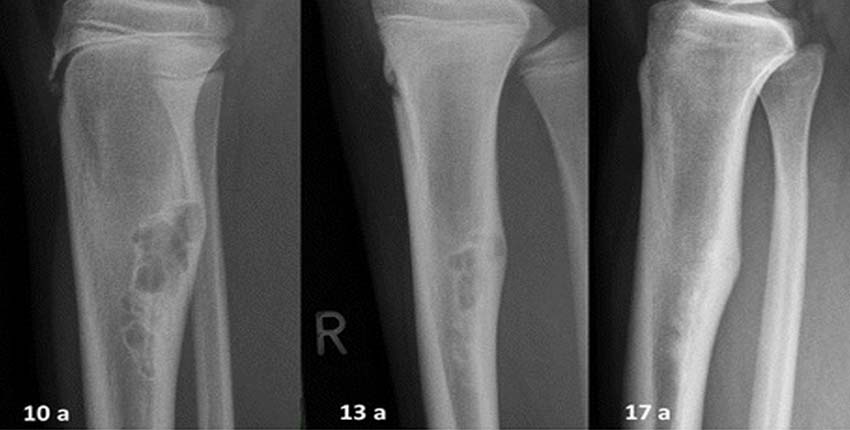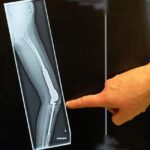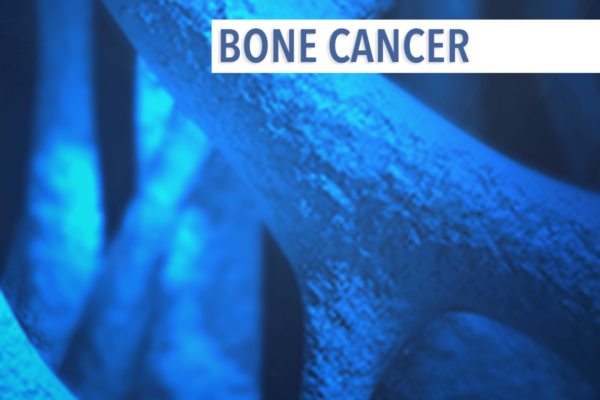Bone Sarcoma
Bone is mesenchymal tissue (dense connective tissue). Cancer in bone could be primary and secondary. The most common form of bone cancers are secondaries from metastasis of carcinomas of other organs.
Primary sarcoma is the cancer of the bone that originates within the bone. We term primary cancer of bone as a sarcoma (behaves differently from carcinomas).
Here we are discussing primary bone sarcoma
– Types:
1. Primary: Which originates without any pre-existing lesion
a. Osteosarcoma (most common type) – originates from bone-forming cells
b. Ewing’s Sarcoma (2 nd most common) – originates from stem cells
c. Chondrosarcoma – originates from cartilage forming cells
d. Other sarcomas – Leiomyosarcoma, Chordoma, Malignant Fibrous Histiocytoma, Fibrosarcoma, Other spindle cell sarcoma
2. Secondary: Which originates from pre-existing lesions
a. Chondrosarcoma – it can originate from the following lesions
i. Paget’s disease
ii. Exostosis
iii. Enchondroma
b. Osteosarcoma – it can originate from the following lesions
i. Paget’s disease
ii. Previous radiation
iii. Fibrous dysplasia
iv. Bone infarct
v. Chronic Osteomyelitis
– Risk Factors:
1. Most Patients do not have any risk factors
2. Previous exposure to radiation
3. Genetic syndromes: Hereditary retinoblastoma, Hereditary Multiple exostosis, LFS, RTS II, Ollier & disease or Maffucci & syndrome
4. Paget’s disease
– Incidence:
Bone sarcoma is rare cancers and comprises only 1% of all cancer.
– Site:
Any bone can be involved but most common in long bones around joints and pelvic bones.
– Symptoms: Usually precedes 2-3 months before reaches to clinicians
1. Swelling
2. Pain without significant trauma
3. Fracture without significant trauma
4. Weight loss
5. Low grade fever
– Diagnosis:
Correct diagnosis is the most important part of the management of bone cancer. Specialized sarcoma surgeon, pathologist, and experienced radiologist: input from all three is the key for correct diagnosis.
– Spread (Metastasis):
Usually spread to Lung and Bone. It can spread to other sites also.
– Mistakes during Management:
1. Patients related Mistakes:
a. Late presentation to clinicians
b. Wasting time due to unacceptance
c. Taking treatment from Quacks/Unspecialized Surgeons
2. Clinician Related
a. Not aware that sarcoma could be a possibility as it is rare condition
b. Wrong biopsy: Biopsy should always be done by treating Specialized Sarcoma Surgeon
c. Relying on MRI report
– Treatment Options:
1. Surgery: Surgery is the main modality of treatment. Complete removal of the tumor with optimal preservation of function.
2. Chemotherapy: It is also a necessary part of treatment modality in osteosarcoma and Ewing’s sarcoma, but no role in conventional chondrosarcoma (may be given in metastatic disease)
3. Radiation: can be used as an alternative to surgery in Ewing’s sarcoma, but with caution.
– Outcome:
The outcome of the patient after completing treatment depends on various factors like
- Stage at presentation
- Default in treatment
- Early initiation of treatment
- Getting late in adjuvant chemo due to post-op infection, or flap necrosis
- Tolerability of patient with chemo
- Will power of patients
Usually, those presented in stage IIB had 70-75% chances of 5 years survival
Those presented with stage III had 25-40% chances of 5 years survival





